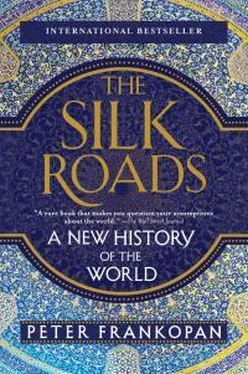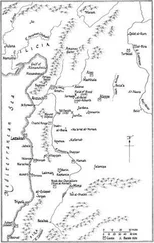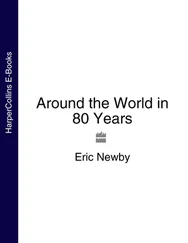Trade with ports in India was not, however, limited to products that originated in the subcontinent. As excavations at the Red Sea port of Berenike in Egypt have shown, an array of goods from as far afield as Vietnam and Java found their way towards the Mediterranean.73 Ports on both the western and eastern coasts of India served as emporia for goods brought from all over eastern and south-eastern Asia ready to be shipped west.74 Then there were the goods and produce of the Red Sea, a vibrant commercial zone in its own right as well as linking the Mediterranean with the Indian Ocean and beyond.75
Rome’s well-heeled citizens were by now able to indulge the most exotic and extravagant of tastes. Well-connected commentators complained that spending bordered on the obscene and bemoaned the voguish displays of excess.76 This is captured perfectly in Petronius’ Satyricon , whose most famous scene is the dinner party of Trimalchio, a former slave who had gained his freedom and amassed a fortune. The satire is acidic in its portrayal of the tastes of the new super-rich. Trimalchio wanted only the best that money could buy: pheasant brought in specially from the eastern coast of the Black Sea; guinea fowl from Africa; rare and expensive fish; plumed peacock, and much more besides, presented in excess. The grotesque theatre of presenting dish after dish—live birds sewn inside a whole pig that flew out the moment the ham was carved, or silver toothpicks being given to the guests—was a remorseless parody of the vulgarity and excess of Rome’s new wealth. One of the major booms of antiquity produced one of the great literary expressions of bitter jealousy towards the nouveaux riches.77
New wealth brought Rome and its inhabitants into contact with new worlds and new tastes. The poet Martial typifies the internationalism and expanded knowledge of this period in a poem mourning a young slave girl, comparing her to an untouched lily, to polished Indian ivory, to a Red Sea pearl, with hair finer than Spanish wool or blonde locks from the Rhine.78 Where couples wanting to conceive beautiful children would previously have had sex surrounded by erotic images, “now,” reported one horrified Jewish writer, “they bring Israelite slaves and tie them to the foot of the bed” for inspiration, and because they could afford to.79 Not all were impressed by the new tastes: the Tiber had been overwhelmed by the waters of the Orontes, the river that flows through Syria and southern Turkey, complained Juvenal in his Satires later—in other words, Asian decadence had destroyed old-fashioned Roman virtues; “clear off,” he wrote, “if you take a shine to a fancy prostitute wearing barbarian headgear.”80
* * *
For some conservative observers, it was the appearance of one commodity in particular that appalled: Chinese silk.81 The increasing volume of this fabric available in the Mediterranean caused consternation among traditionalists. Seneca for one was horrified by the popularity of the thin flowing material, declaring that silk garments could barely be called clothing given they hid neither the curves nor the decency of the ladies of Rome. The very foundation of marital relations was being undermined, he said, as men found they could see through the light fabric that clung to the female form and left little to the imagination. For Seneca, silk was simply a cipher for exoticism and eroticism. A woman could not honestly say she was not naked when she was wearing silk.82 Others felt the same, for repeated efforts were made to prohibit men from wearing the fabric, including edicts passed by law. Some put it simply: it was disgraceful, two leading citizens agreed, that Roman men should think it acceptable to sport silken clothing from the east.83
Others, though, were concerned about the prevalence of silk for different reasons. Writing in the second half of the first century AD, Pliny the Elder resented the high cost of the luxury material simply to “enable the Roman lady to shimmer in public.”84 The inflated prices were a scandal, he moaned, a hundred times the real cost.85 Huge amounts of money were being spent annually, he continued, on luxuries “for us and our women” from Asia, with as much as 100 million sesterces per year being pumped out of the Roman economy and into trade markets beyond the frontier.86
This astonishing sum represented nearly half the annual mint output of the empire, and more than 10 per cent of its annual budget. But, remarkably, it does not appear to have been wildly exaggerated. A recently discovered papyrus contract recording the terms of a shipment of goods between Muziris in India and a Roman port on the Red Sea is testimony to how regular large-volume business had become by the second century AD. It sets out a series of mutual obligations, explaining clearly at what point the goods were to be considered in the hands of the owner or the shipper and outlining the sanctions if payment was not effected on the specific date.87 Long-distance business required rigour and sophistication.
Roman merchants did not only pay with coins, however. They also traded finely worked glass, silver and gold, as well as coral and topaz from the Red Sea and frankincense from Arabia in exchange for textiles, spices and dyes like indigo.88 Whatever form it took, the outflow of capital on this scale had far-reaching consequences. One was a strengthening of local economies along the trade routes. Villages turned into towns and towns turned into cities as business flourished and communication and commercial networks extended and became ever more connected. Increasingly impressive architectural monuments were erected in places like Palmyra, on the edge of the Syrian desert, which did well as a trading centre linking east with west. Not for nothing has Palmyra been called the Venice of the sands.89 Cities on the north–south axis likewise were transformed, with the most dazzling example at Petra, which became one of the wonders of antiquity thanks to its position on the route between the cities of Arabia and the Mediterranean. Then there were fairs that drew in traders from hundreds, if not thousands, of miles away at convenient crossroad points. Every September at Batnae near the Euphrates “the town [was] filled with rich merchants as great crowds gather for the fair to buy and sell things sent from India and China, as well as all manner of other things which are also brought there by land and sea.”90
Such was Rome’s spending power that it even determined the design of coinage deep in eastern Asia. After being pushed from the Tarim basin by the Chinese, Yuezhi nomads had managed to secure a dominant position for themselves to the east of Persia, taking over domains that had been ruled by the descendants of Alexander’s generals. In time, a thriving empire was born, named after one of the leading groupings within the tribe—the Guishang, or the Kushan—which took to minting large quantities of coins modelled on those of Rome.91
Roman currency poured into Kushan territory through ports in northern India, like Barbaricum and above all Barygaza, where the approach and anchorage were so treacherous that pilots were sent out to guide ships into port. Negotiating the approach to both ports was extremely dangerous for those who were inexperienced or were unfamiliar with the currents.92 Once on land, traders could find pepper and spices as well as ivory and textiles, including both finished silks and silk yarn. It was an emporium that gathered goods from all over India, Central Asia and China—and delivered extraordinary wealth to the Kushan, who controlled the oasis towns and caravan routes that linked them.93
The dominant position that the Kushan were able to establish meant that, although goods were imported and exported from the Mediterranean into China in growing quantities, the Chinese themselves played little role in trade with Rome via the Indian Ocean. Only when the great general Ban Chao led a series of expeditions that took troops as far as the Caspian Sea at the end of the first century AD was an envoy dispatched to bring back more information about the “tall and regularly featured” population of the powerful empire in the west. Da Qin—or the Great Qin—as the Roman Empire was called, was reported to possess abundant supplies of gold, silver and fine jewels: it was a source of many marvellous and rare objects.94
Читать дальше











